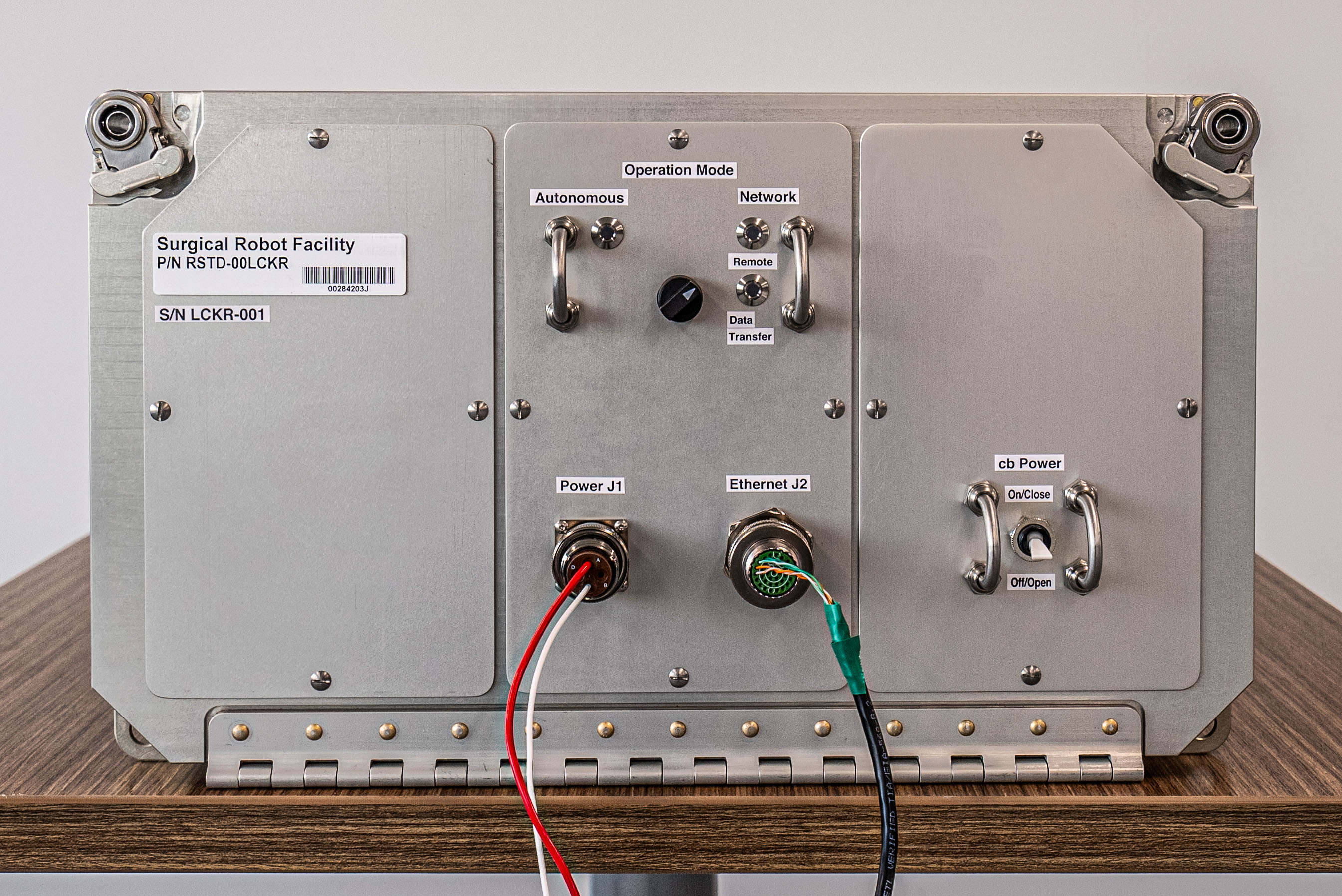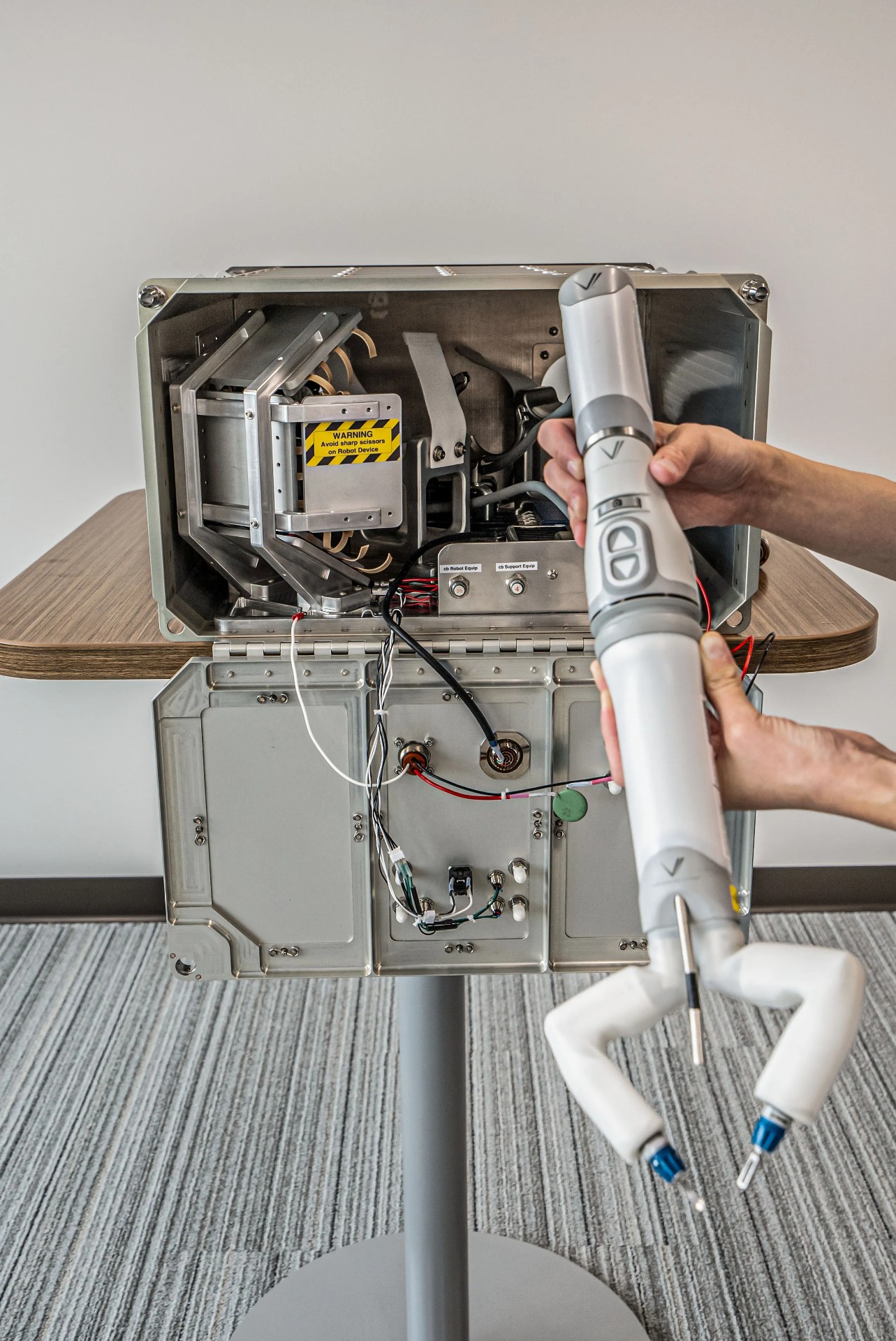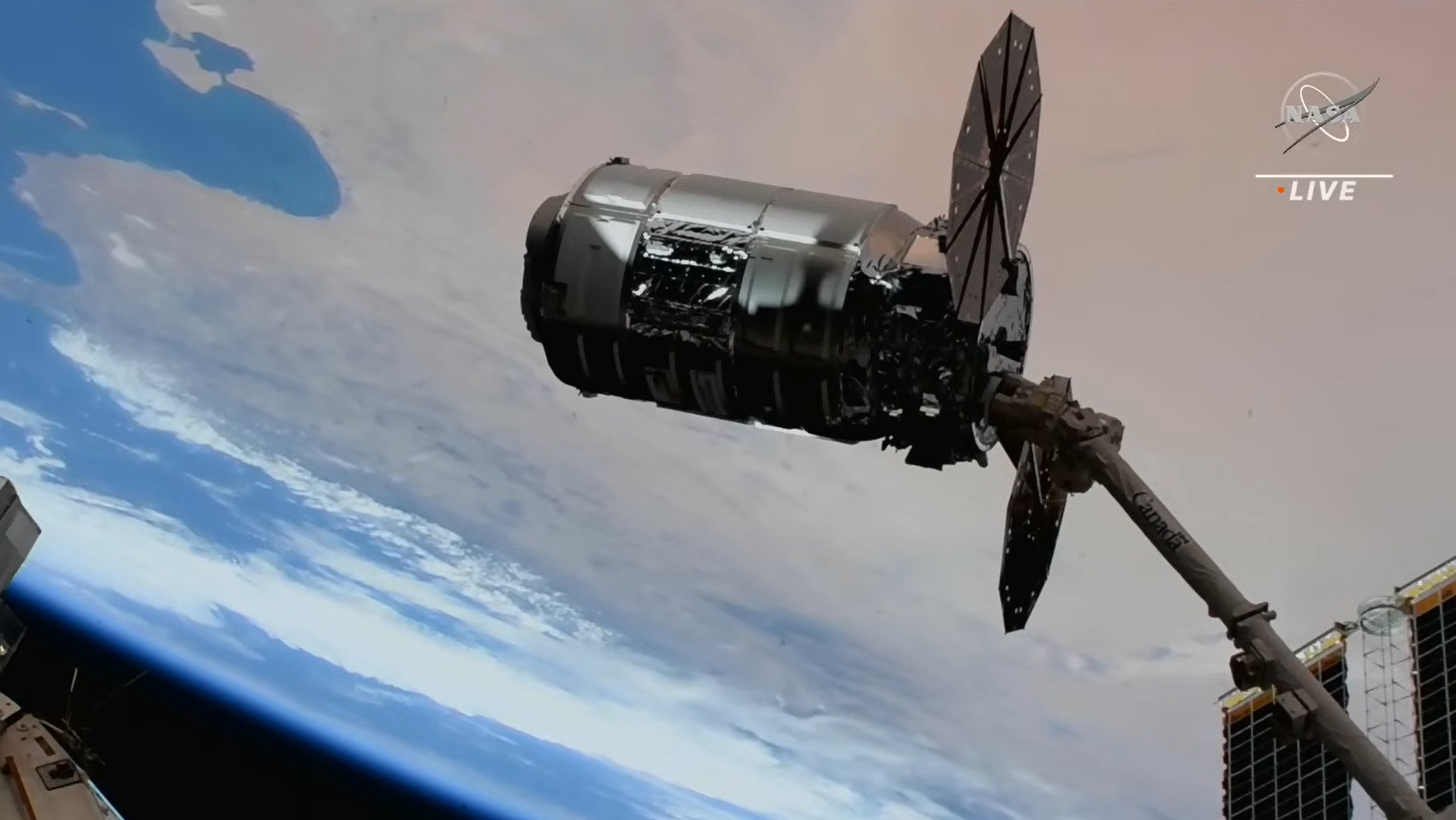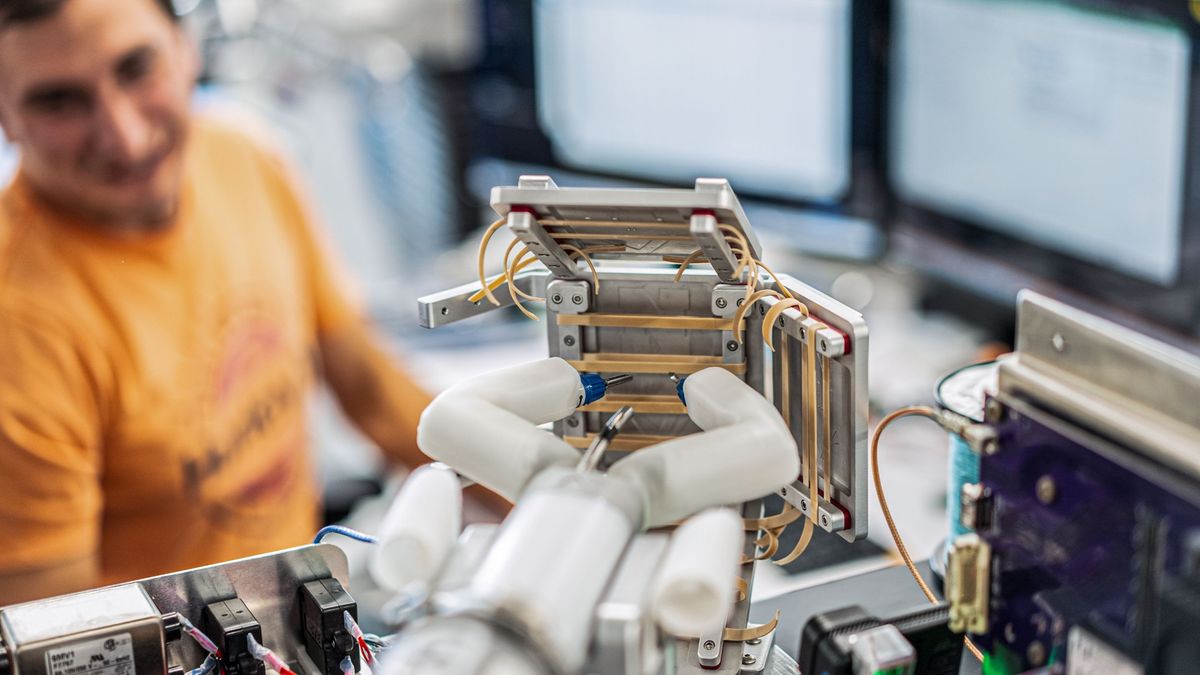Very soon, a robot surgeon may begin its orbit around our planet — and though it won’t quite be a metallic, humanoid machine wearing a white coat and holding a scalpel, its mission is fascinating nonetheless.
On Tuesday (Jan. 30), scientists will be sending a slew of innovative experiments to the International Space Station via Northrop Grumman’s Cygnus spacecraft. It’s scheduled to launch no earlier than 12:07 p.m. ET (1707 GMT) and, if all goes to plan, arrive at the ISS a few days later on Feb. 1.
Indeed one of the experiments onboard is a two-pound (0.9-kilogram) robotic device, about as long as your forearm, with two controllable arms that respectively hold a grasper and a pair of scissors. Developed by a company named Virtual Incision, this doctor robot of sorts is built to someday be able to communicate with human doctors on the ground while inserting itself into an astronaut patient to conduct medical procedures with high accuracy.
“The more advanced part of our experiment will control the device from here in Lincoln, Nebraska, and dissect simulated surgical tissue on orbit,” Shane Farritor, co-founder of Virtual Incision, said during a presentation about Cygnus on Friday.
For now, as it’s in preliminary stages, it’s going to be tested on rubber bands — but the team has high hopes for the future as missions to the moon, Mars and beyond start rolling down the space exploration pipeline. Remote space medicine has become a hot topic during the last few years as space agencies and private space companies lay plans for a variety of future crewed space missions.
Related: International Space Station will host a surgical robot in 2024
NASA’s Artemis Program, for instance, hopes to have boots on the moon in 2026 — plus, that’s supposed to pave the way for a day on which humanity can say they’ve reached the Red Planet. And together, those missions are expected to pave the way for a far future in which humanity embarks on deeper space travel, perhaps to Venus or, if we’re really dreaming, beyond the solar system. So to make sure astronauts remain safe in space — an environment they’re literally not made to survive in — scientists want to make sure space-based medical treatment sees advancement in tandem with the rockets that’ll take those astronauts wherever they’re going.
A quick example that comes to mind is how, in 2021, NASA flight surgeon Josef Schmid was “holoported” to the ISS via HoloLens technology. It’s sort of like virtual reality meets FaceTime meets augmented reality, if that makes sense.
However, as the team explains, not only could this robotic surgery mission benefit people exploring the void of space, but also those living right here on Earth. “If you have a specialist who’s a very good surgeon, that specialist could dial into different locations and help with telesurgery or remote surgery,” Farritor said. “Only about 10% of operating rooms today are robotic, but we don’t see any reason that shouldn’t be 100%.”

This would be a particularly crucial advantage for hospitals in rural areas where fewer specialists are available, and where operating rooms are limited. In fact, as Farritor explained, not only is Virtual Incision funded by NASA but also by the military. “Both groups want to do surgery in crazy places,” he said, “and our small robots kind of lend themselves to mobility like that.”

What else is going up?
The little robot doctor will be far from alone on the Cygnus spacecraft as it heads to the ISS; during the same presentation in which Farritor discussed Virtual Incision, other experts talked about what they’ll be sending up come Monday.
For one, it’ll have a robot friend joining it in the orbital laboratory — a robotic arm. This arm has already been tested within the station’s constraints before, but with this new mission the team hopes to test it in fully unpressurized conditions.
“Unplugging, replugging, moving objects, that’s the kind of stuff that we did with the first investigation,” said May Murphy, the director of programs at company NanoRacks. “We’re kind of stepping up the complexity … we’re going to switch off which tools we’re using, we’ll be able to use screwdriver analogs and things like that; that will enable us to do even more work.”
“We can look at even beyond just taking away something that the crew would have to spend time working on,” she continued. “Now, we also have the capacity to do additional work in harsher environments we don’t necessarily want to expose the crew to.”
The European Space Agency, meanwhile, will be sending a 3D-printer that can create small metal parts. The goal here is to see how the structure of 3D-printed metal fares in space when compared to Earth-based 3D-printed metal. 3D-printed semiconductors, key components of most electronic devices, will be tested as well for a similar reason.
“When we talk about having vehicles in space for longer periods of time without being able to bring supplies up and down, we need to be able to print some of these smaller parts in space, to help the integrity of the vehicle over time,” said Meghan Everett, NASA’s ISS program deputy scientist.
Per Everett, this could also help scientists learn whether some sorts of materials that aren’t 3D-printable on Earth can be 3D-printed in space. “Some preliminary data suggests that we can actually produce better products in space compared to Earth which would directly translate to better electronics in energy producing capabilities,” she said.
Another experiment getting launched on Monday looks at the effects of microgravity on bone loss. Known as MABL-A, it will look at the role of what’re known as mesenchymal cells (associated with bone marrow) and how that might change when exposed to the space environment. This could offer insight into astronaut bone loss — a well-documented, major issue for space explorers — as well as into the dynamics of human aging. “We will also look at the genes that are involved in bone formation and how gravity affected them,” said Abba Zubair, a professor of Laboratory Medicine and Pathology at Mayo Clinic.
Lisa Carnell, division director for NASA’s Biological and Physical Sciences Division, spoke about the Apex-10 mission headed up, which will see how plant microbes interact in space. This could help decode how to increase plant productivity on Earth, too.
Computers and retinas
Two of the other key experiments discussed during the presentation include a space computer and an artificial eye — well, an artificial retina, to be exact. We’ll start with the latter.
Nicole Wagner, CEO of a company named LambdaVision, has a staggering goal: To restore vision to the millions of patients that are blinded by end stage retinal degenerative diseases like macular degeneration and retinitis pigmentosa.
To do this, she and her team are trying to develop a protein-based artificial retina that’s built through a process known as “electrostatic layer-by-layer deposition.” In short, this consists of depositing multiple layers of a special kind of protein onto a scaffold. “Think of the scaffold almost like a tightly woven piece of gauze,” Wagner said.
However, as she explains, this process on Earth can be impeded by the effects of gravity. And any imperfections in the layers can pretty much ruin the artificial retina’s performance. So … what about in microgravity? To date, LambdaVision has flown more than eight missions to the ISS, she says, and the experiments have shown that microgravity does indeed generate more homogenous layers and therefore better thin films for the retina.
“In this mission,” she said, “we’re looking at sending a powdered form of bacteriorhodopsin to the ISS that will then be resuspended into a solution, and we will be using special instruments, in this case spectrometers, to look at the protein quality and purity on the International Space Station, as well as to validate this process used to get the protein into solution.”
Could you imagine if doctors would be able to commission a few artificial retinas to be developed in space someday, then delivered to the ground for implantation into a patient. And that this whole process could give someone their sight back?
As for the space computer, Mark Fernandez, principal investigator for the Spaceborne Computer-2 project, posed a hypothetical. “Astronauts go on a spacewalk, and after their work day, the gloves are examined for wear-and-tear,’ he said. “This must be done by every astronaut, after every spacewalk, before the gloves can be used again.”
Normally, Fernandez explains, the team takes a bunch of high-resolution photographs of the potentially contaminated gloves, then sends those images out for analysis.

This analysis, he says, typically takes something like five days to finish and return. So, hoping to solve the problem, the team developed an AI model in collaboration with NASA and Microsoft that can do the analysis straight on the station and flag areas of concern. Each takes about 45 seconds to complete. “We’re gonna go on from five days to just a few minutes,” he said, adding that the team also did DNA analysis typically conducted on the space station in about 12 minutes. Normally, he emphasized, that’d take months.
But, the team wants to make sure Spaceborne Computer-2’s servers will function properly while on the ISS, hence the Cygnus payload. This will mark the company’s third ISS mission.
“The ISS National Lab has so many benefits that it’s attributing to our nation,” Carnell said. “It creates a universe of new possibilities for the next generation of scientists and engineers.”














